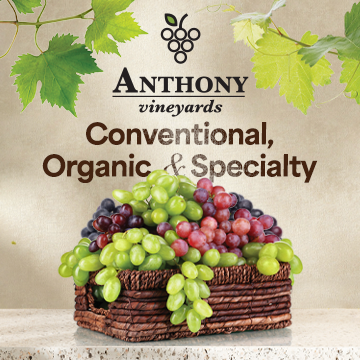<p style="text-indent:0px; line-height:12px;"><span style="font-weight:bold;">California & Arizona-</span><hr class="legacyRuler"><hr class="legacyRuler"><hr class="invisible minimal-padding">By ANUK Staff<hr class="legacyRuler"><hr class="legacyRuler"><hr class="invisible minimal-padding">3.7.13</p><hr class="legacyRuler"><hr class="invisible minimal-padding"><p>The "National Commodity Specific Food Safety Guidelines for Cantaloupes and Netted Melons" are now available for use by the cantaloupe industry.<hr class="legacyRuler"><hr class="legacyRuler"><hr class="invisible minimal-padding">The guidance document was developed by a broad coalition of industry and academic experts as well as government scientists and industry regulators. It is intended to provide guidance to the industry on how to minimize microbial hazards during primary production through packing and transport of fresh cantaloupes. </p><hr class="legacyRuler"><hr class="invisible minimal-padding"><p><img src="https://cdn.andnowuknow.com/legacyWriterImages/ncg-cantaloupe-website.jpg" alt="News Images 030613" /></p><hr class="legacyRuler"><hr class="invisible minimal-padding"><p>The guidance is intended to be a “living document” that will keep pace with science and industry knowledge.<hr class="legacyRuler"><hr class="legacyRuler"><hr class="invisible minimal-padding">All individuals involved in the production, harvesting, packing, cooling, storage and transporting of fresh uncut cantaloupes are strongly encouraged to use the guidance to develop their own very specific "preventive" food safety programs and practices to address risk and minimize microbial hazards.<hr class="legacyRuler"><hr class="legacyRuler"><hr class="invisible minimal-padding">The focus of the National Cantaloupe Guidance website has shifted from guidance development to a resource center where the guidance document and other resources will be maintained.<hr class="legacyRuler"><hr class="legacyRuler"><hr class="invisible minimal-padding">Growers, handlers and other users are encouraged to provide feedback during the 2013 growing season through the website. At the end of the season, the development group will evaluate comments, review the guidance and make changes as necessary to improve the practicality for industry and protections for consumers.</p><hr class="legacyRuler"><hr class="invisible minimal-padding"><p><img src="https://cdn.andnowuknow.com/legacyWriterImages/cantaloupe.jpg" alt="News Images 030613" /></p><hr class="legacyRuler"><hr class="invisible minimal-padding"><p>The guidance was released as the U.S. Food and Drug Administration announced that it will begin inspecting U.S. cantaloupe packinghouses to assess current practices and to identify conditions that could affect the safety of product on its way to consumers.<hr class="legacyRuler"><hr class="legacyRuler"><hr class="invisible minimal-padding">Click below for the guidelines:<hr class="legacyRuler"><hr class="legacyRuler"><hr class="invisible minimal-padding"><a class="btn btn-sm btn-primary col-lg-12" style="white-space: normal;" href=" http://www.cantaloupe-guidance.org/sites/default/files/docs/Natl%20Cantaloupe%20Guidance.pdf" target="_new">Cantaloupe Guidelines </a></p><hr class="legacyRuler"><hr class="invisible minimal-padding">





